How to Remove Spider Webs
Home » Blog » How to Remove Spider Webs
Spider webs can be unsightly bugs and create a nuisance in our homes. Fortunately, there are several effective methods to remove spider webs and keep your living spaces clean and spider-free. Whether you’re dealing with bugs from a small web or a large infestation, taking the right steps will help you eliminate these unwanted pests from your surroundings.
1. Identify and locate spider webs
Start by identifying the areas where spider webs are most prevalent in your house. Common areas include corners, ceilings, windowsills, and door frames. Once you’ve located them, make a note of the extent of the infestation.
2. Safety first
Before removing spider webs with a broom, ensure that you take necessary safety precautions. Wear gloves to protect your hands from spider bites, and consider wearing protective eyewear if needed.
3. Sweep away the webs
Use a broom or a long-handled duster to gently sweep away the spider webs. Start from the top and work your way down, collecting the webs as you go. Make sure to remove all visible webs, including any egg sacs or spiderlings.
4. Vacuuming
For hard-to-reach areas or delicate surfaces, such as curtains or furniture, use a vacuum cleaner with an extension wand or a crevice tool attachment. Vacuuming helps to remove spiders, eggs, and smaller web remnants effectively.
5. Clean and sanitize
After removing the webs, it’s essential to clean the area thoroughly. Wipe down surfaces with a damp cloth or spray disinfectant spray with a spray bottle to remove any remaining debris or spider silk. This step is crucial to discourage spiders from returning to the same spot.
6. Preventive measures
To prevent future spider infestations, take proactive measures. Keep your house tidy and clutter-free, as spiders are attracted to dark and undisturbed areas. Seal cracks and gaps in windows, doors, and walls to minimize entry points for spiders. Regularly clean and declutter outdoor areas such as sheds, garages, and basements.
7. Natural deterrents
Consider using natural spider repellents, such as essential oils like peppermint, citrus, or eucalyptus. Spiders dislike the strong scent of these oils and may be deterred from spinning webs in treated areas. Apply a few drops onto cotton balls and place them strategically around your house.
Removing spider webs is an important step in maintaining a clean and pest-free living environment. By identifying and locating the webs, sweeping them away, vacuuming, cleaning, and taking preventive measures, you can effectively prevent spider webs from your home. Regular maintenance and adopting natural deterrents will help prevent future infestations. Remember to prioritize safety while removing spider webs, and if you’re dealing with a severe infestation, it’s advisable to seek professional assistance. With the right approach, you can ensure a spider-free home and enjoy a more comfortable living space.
Spider Webs
These intricately woven structures created by spiders can pose certain disadvantages in various settings. Understanding these disadvantages can help us navigate and address issues that may arise from spider webs.
1. Unsightly appearance
One of the primary disadvantages of spider webs is their unsightly appearance. When webs accumulate in our homes, gardens, or outdoor spaces, they can create a messy and unkempt appearance. This can be particularly concerning in commercial settings where cleanliness and aesthetics are essential.
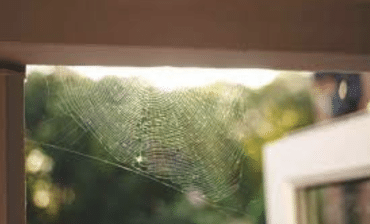
2. Difficulty in cleaning
Removing spider webs can be a challenging task. The delicate nature of the silk can make it tricky to completely remove using a broom, without leaving behind traces or damaging surfaces. Additionally, the stickiness of the silk can cause debris to become entangled, making the cleaning process more time-consuming.
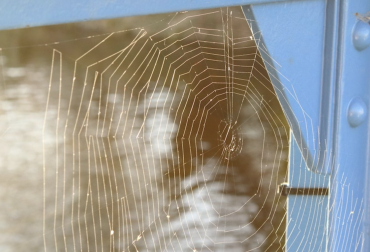
3. Allergies and sensitivities
For individuals with allergies or sensitivities, spider webs can pose potential health risks. Dust and allergens may accumulate on webs, leading to allergic reactions or respiratory issues in susceptible individuals. This can be particularly problematic for those with asthma or other respiratory conditions.
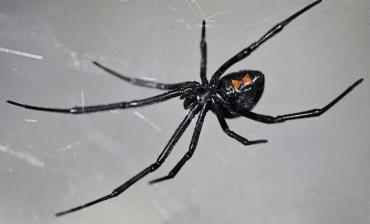
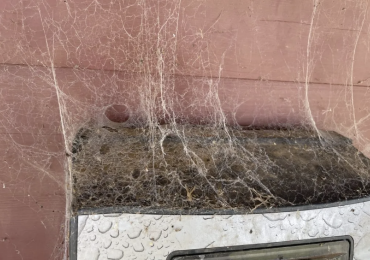
4. Inconvenience in outdoor spaces
In outdoor settings, spider webs can be an inconvenience. Walking through webs can be unsettling and uncomfortable, causing feelings of unease. Additionally, outdoor webs can obstruct pathways or interfere with outdoor activities such as gardening or outdoor events.
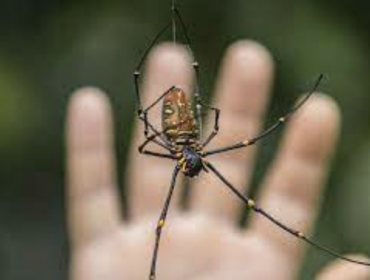
5. Potential for spider bites
While most spiders are harmless to humans, the presence of sticky webs may increase the likelihood of encountering spiders. Accidental contact with a spider can result in a bite, which can lead to discomfort, swelling, or, in rare cases, allergic reactions. This possibility can be concerning for individuals with arachnophobia or those living in regions with venomous spiders.
Spider Eggs
Spider eggs are the starting point of a spider’s life cycle, and they can be found in various locations around our homes, gardens, and outdoor spaces. While spiders play an important role in controlling insect populations, the presence of eggs can lead to future infestations if not addressed. Understanding how eggs are laid and implementing effective eradication methods can help maintain a spider-free environment.
1. Spider egg characteristics
Spider eggs are typically contained within silk sacs called egg sacs or cocoons. These sacs can vary in size, shape, and color, depending on the spider species. The number of eggs within each sac can range from a few dozen to several hundred, increasing the potential for a large spider population if left unchecked.
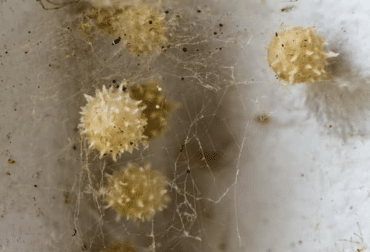
2. Identifying spider egg sacs
Spider egg sacs are often found in hidden or undisturbed areas, such as corners, crevices, under furniture, or in vegetation. They may appear as small, round or oval-shaped structures, often covered in silk threads. Pay attention to any unusual formations that resemble spider egg sacs when conducting inspections.
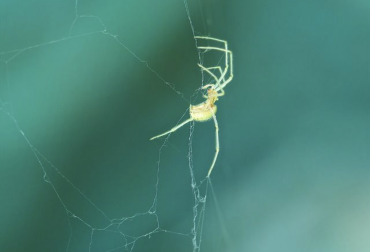
3. Physical removal of spider egg sacs
The most direct method to eradicate eggs is through physical removal. Use caution and wear gloves when handling egg sacs to avoid accidental hatching or contact with dangerous spider species. Gently scrape or vacuum up the egg sacs, ensuring that all sacs and silk threads are completely removed from the area.
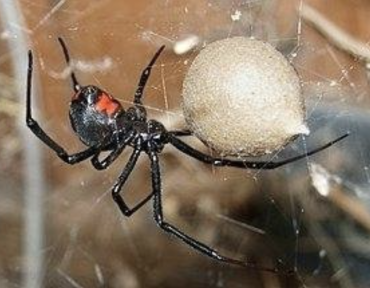
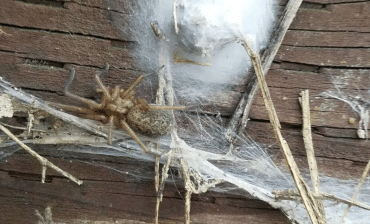
4. Disposal of spider eggs
Once the egg sacs are removed, it is crucial to dispose of them properly to prevent hatching. Seal the collected egg sacs in a plastic bag and dispose of them in an outdoor trash bin. This will prevent any potential spiderlings from hatching and re-infesting the area.
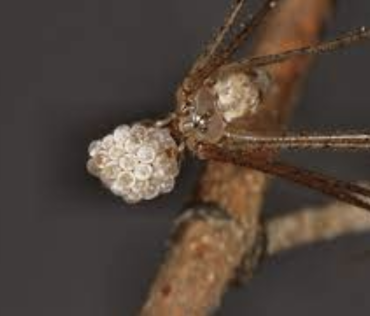
5. Eliminating conducive environments
Preventing future spider egg infestations involves eliminating the conditions that attract spiders. Regularly clean and declutter your living spaces including window and door openings and window screens to remove hiding spots for spiders and their egg sacs. Seal cracks, gaps, and entry points around windows, doors, and foundations to prevent spiders from entering your house.
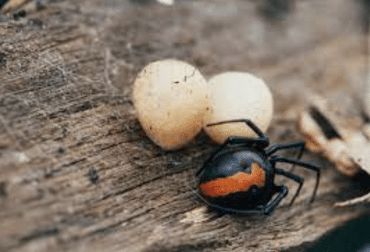
6. Professional pest control
If you are dealing with a significant spider egg infestation or if you are unsure about handling egg sac removal, it may be best to seek professional help form pest control services. Experienced technicians can safely identify and remove eggs, as well as provide recommendations for preventing future infestations.
Spider Webs
While spider webs are fascinating and serve important purposes in the natural world, they also come with certain disadvantages. It is crucial to understand these drawbacks to better navigate our interactions with stubborn webs and mitigate any potential challenges they may pose.
1. Inconvenience and aesthetics
Spider webs can be a source of inconvenience and frustration, especially when they accumulate in indoor spaces or obstruct outdoor areas. Walking into a spider web can be unpleasant, and cleaning away the silk strands can be time-consuming. Additionally, the presence of webs may negatively impact the visual appeal of a space, particularly for those who prefer a tidy and uncluttered environment.
2. Potential hygiene concerns
In indoor spaces, spider webs may collect dust, debris, and dead insects over time. This accumulation can contribute to an unclean and potentially unhygienic living environment, especially for individuals with respiratory issues or allergies. Regular cleaning and removal of spider webs are necessary to maintain a clean and healthy space.
3. Indication of other pest problems
The presence of spider webs can indicate an abundance of prey, such as insects, in the surrounding area. While spiders play a vital role in controlling insect populations, the sight of numerous spider webs may be an indication of an underlying pest problem that needs attention. Addressing the root cause of the insect infestation is essential to prevent further spider web proliferation.
4. Outdoor maintenance challenges
In outdoor spaces, spider webs can complicate maintenance tasks such as gardening, landscaping, or outdoor activities. Webs can become entangled with tools, obstruct paths, and create a generally unpleasant experience when trying to enjoy outdoor spaces. Regular cleaning and proactive removal of webs from outdoor areas can help to prevent spider webs.
Prevent Spider Webs
Preventing the formation of webs in our homes and outdoor spaces can help maintain a clean and spider-free environment. By implementing a few simple strategies, we can discourage spiders from spinning their intricate webs and reduce the need for constant cleaning and removal.
1. Regular cleaning and decluttering
Spiders are attracted to cluttered areas where they can find hiding spots and build their webs undisturbed. Regularly clean and declutter your living spaces, paying attention to areas that are often overlooked, such as corners, windowsills, and storage areas. Use a cleaning brush on any stubborn webs and avoid spraying electronics, lighting fixtures, and appliances. Vacuuming and dusting can help remove spider eggs, webs, and potential food sources.
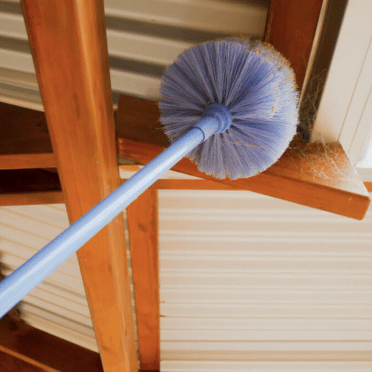
2. Seal entry points
Spiders can enter our homes through small cracks and gaps in windows, doors, foundations, and utility openings. Inspect your house for any potential entry points and seal them using caulk, weatherstripping, or other suitable materials. This will help prevent spiders from gaining access to your living spaces.
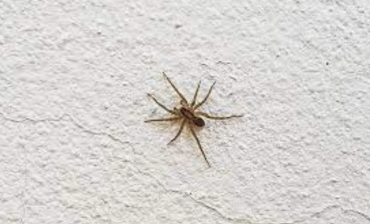
3. Eliminate food sources
Spiders are attracted to areas where they can find abundant prey. Regularly clean up food crumbs, spills, leftover bits, and pet food to discourage insects from invading your house. Additionally, consider using screens on windows and doors to prevent flying insects from entering and becoming potential spider prey.
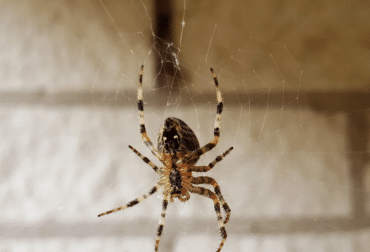
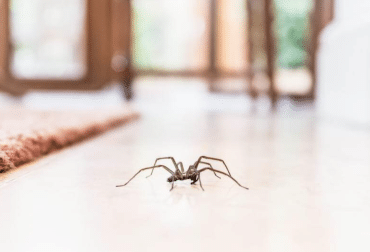
4. Outdoor maintenance
Keep outdoor areas well-maintained to reduce spider habitat. Trim vegetation near your home and remove debris, leaf piles, and woodpiles that can attract them. Regularly sweep or use a leaf blower to clear away stubborn webs from outdoor structures, such as porches, eaves, and fences, to keep your home free of spiders.
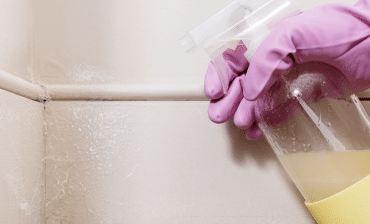
5. Natural repellents
Certain scents and substances can deter spiders from forming webs in specific areas. When it comes to natural repellents for eradicating spider webs, there are several options like certain oils or vinegars that can help deter them from spinning their intricate structures.



